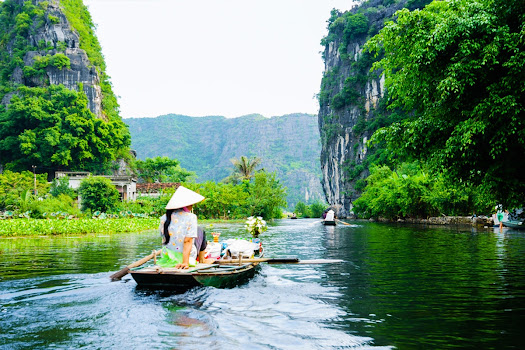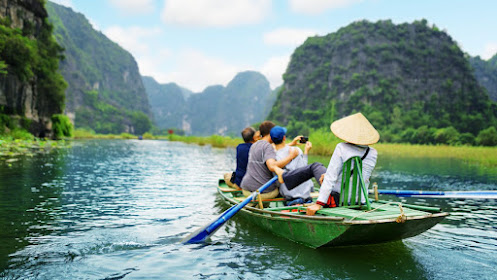Best Time to Visit Vietnam: A Traveler's Guide
Vietnam, a country with a rich tapestry of history, culture, and natural beauty, offers an array of experiences for travellers. From bustling cities to serene countryside, Vietnam's diverse landscapes and attractions make it an ideal destination for a memorable vacation. However, choosing the right time to visit Vietnam is crucial for experiencing the best of what the country has to offer.
In this guide, we'll explore the optimal times to embark on a Vietnam Travel Guide adventure, ensuring that you make the most of your visit to this enchanting Southeast Asian gem.
Understanding Vietnam's Weather Patterns
Before diving into the best times to visit Vietnam, it's essential to grasp the country's distinct weather patterns. Vietnam experiences a tropical climate characterised by monsoon seasons and varying temperatures across different regions. The country can be divided into three main regions: the north, central, and south, each with its unique climate and weather conditions.
Northern Vietnam:
- The north experiences a clear distinction between seasons, with hot summers and chilly winters.
- Summer (May to October) brings hot and humid weather, while winter (November to April) can be cool and dry.
Central Vietnam:
- Central Vietnam is influenced by the South China Sea, resulting in high humidity and a typhoon season from October to December.
- The region's rainy season typically occurs from September to February, with a dry season from February to August.
Southern Vietnam:
- Southern Vietnam boasts a tropical climate characterised by year-round warmth and humidity.
- The dry season spans from December to April, while the wet season occurs from May to November, with brief but heavy downpours being common.
The Best Times to Visit Vietnam
- Spring (February to April)
Spring is considered one of the best times to explore Vietnam. The weather is generally pleasant across the country, with minimal rainfall and comfortable temperatures, making it ideal for outdoor activities and sightseeing. During this time, vibrant festivals, including the Tet Lunar New Year, offer a glimpse into Vietnam's rich cultural traditions, making it an opportune time to immerse yourself in the local customs and celebrations.
- Fall (September to November)
Similar to spring, fall presents favourable weather conditions for Vietnam travel. The autumn months bring milder temperatures and decreased rainfall, creating an inviting atmosphere for exploring Vietnam's attractions. The cooler weather also adds to the allure of outdoor excursions and sightseeing, providing ample opportunities to witness the natural beauty of the country.
- Avoiding the Typhoon Season
It's important to note that Vietnam's central coast is susceptible to typhoons from October to December. Travellers planning visits during this period should exercise caution and stay updated on weather forecasts to ensure a safe and enjoyable trip.
- Embracing Seasonal Variations
While each season offers unique experiences in Vietnam, travellers should consider the regional variations when planning their visit. For instance, the north's cooler winters are ideal for exploring charming cities such as Hanoi, while the south's dry season is perfect for basking in the splendour of Ho Chi Minh City and the Mekong Delta.
- Festivals and Cultural Events
Immersing yourself in Vietnam's vibrant festivals can enhance your travel experience, offering insights into the country's rich heritage and traditions. Researching local festivals and planning your visit around these events can add a layer of cultural richness to your Vietnam travel adventure.
- Balancing Crowds and Prices
Considering the influx of tourists during peak seasons, travellers seeking a quieter and more budget-friendly experience may find value in visiting during shoulder seasons or less popular times. This approach allows for unhurried exploration and more authentic interaction with Vietnam's attractions and local communities.
- Navigating Specific Activities
Depending on your interests, the best time to visit Vietnam can vary. For outdoor enthusiasts, such as hikers and beachgoers, understanding the weather conditions specific to your preferred activities can help optimise your travel plans and ensure an enjoyable experience.
Conclusion
In conclusion, finding the best time to visit Vietnam is a balance of weather, region-specific considerations, cultural events, and personal preferences. By understanding Vietnam's distinct weather patterns and seasonal variations, travellers can strategically plan their visit to maximise their experience and create lasting memories in this captivating Southeast Asian destination.
Whether you're drawn to the vibrant energy of Hanoi, the ancient allure of Hoi An, or the serene beauty of Ha Long Bay, Vietnam offers a myriad of treasures awaiting discovery. So, pack your bags and prepare for an unforgettable Vietnam travel experience tailored to the best time for your exploration.
With careful planning and a touch of spontaneity, your Vietnam travel escapade is poised to be an enriching journey through a land of timeless wonders.




Comments
Post a Comment